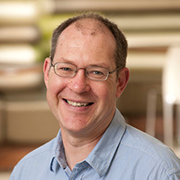A .gov website belongs to an official government organization in the United States.
A lock () or https:// means you've safely connected to the .gov website. Share sensitive information only on official, secure websites.

The OH + HO2 reaction is important in a variety of environments ranging from the upper atmosphere to combustion. Room temperature measurements range over more than an order of magnitude from 1e-11 to 1.5 e-10 cm3 molecule-1 s-1. We've carried out several different approaches including direct and indirect experiments and ab initio calculations. Our results support rate coefficients at the lower end of the literature range, but we can't suggest any reasons why the careful experiments of previous workers would give such different values. Our results do seem to be more consistent with analogous measurements from other workers on the Cl + HO2 reaction. We will put the reaction in context, review the literature and present our experimental and theoretical calculations. We look forward to discussing the results and see whether measurements can be reconciled.
Paul Seakins is a Professor of Reaction Kinetics at the University of Leeds, where he leads the Highly Instrumented Reactor for Atmospheric Chemistry (HIRAC) group. He received his BSc in Chemistry from the University of Birmingham, and his PhD in Reaction Kinetics from the University of Oxford in 1990. He was then a NATO Fellow at JILA, University of Colorado working with Prof Steve Leone. Paul has maintained some links with Boulder returning for several conferences, a summer fellowship with Geoff Tyndall and John Orlando at NCAR and the occasional holiday.
Most relevantly for this audience, aspects of his research have focused on laboratory and chamber studies of reactive intermediates in atmospherically relevant chemical mechanisms, but he has also looked at reactions relevant for low temperature combustion and for the chemistry of the outer planets. He currently sits on the Gas Kinetics Committee of the Royal Society of Chemistry and is involved with many aspects of the EUROCHAMP2020 project on developing and integrating simulation chambers.
ALL Seminar attendees agree not to cite, quote, copy, or distribute material presented without the explicit written consent of the seminar presenter. Any opinions expressed in this seminar are those of the speaker alone and do not necessarily reflect the opinions of NOAA or CSL.